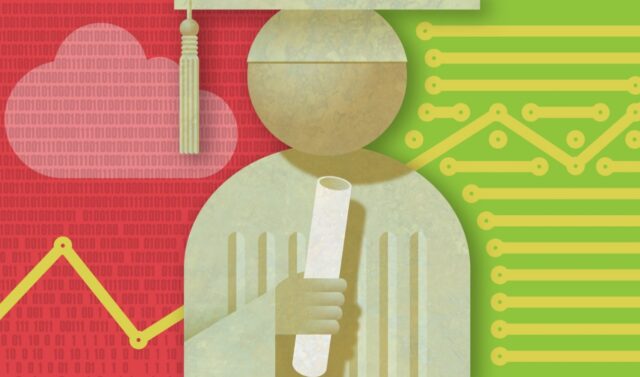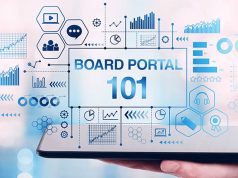
Procurement in higher education is a strategic function that is critical for an institution’s financial and operational health. With improved procurement processes, institutions can achieve significant cost savings, enhance efficiency, and better support their educational and research missions.
Furthermore, in the realm of higher education, where the stakes of research and education are high, procurement is not just a back-office function. It’s a strategic enabler that supports the institution’s broader mission.
Through smart procurement practices, institutions can foster innovation, encourage sustainable choices, and drive ethical and socially responsible purchasing decisions.
By doing so, they not only enhance their operational and financial health but also contribute to a positive societal impact.
In essence, procurement in higher education is a multifaceted strategy that, when executed effectively, can propel institutions towards greater financial stability, operational excellence, and societal contribution.
The Role of Procurement in Higher Education

As an institutional function, higher education purchasing entails much more than the cost-effective acquisition and management of goods and services.
Sound procurement strategies play a pivotal role in maintaining compliance with regulations and standards, as well as foster efficient and quality operations. For those reasons, purchasing and procurement are critical components of institutional governance.
Setting Clear Procurement Goals
The foundation of effective procurement in higher education lies in setting clear, strategic goals. These objectives should align with the institution’s broader mission and values, ensuring that acquisition activities contribute meaningfully to the overall direction and success of the institution.
Clear goals facilitate focused decision-making and efficient resource allocation. They also provide a benchmark against which the success of procurement activities can be measured.
For instance, goals might include reducing costs by a certain percentage, improving the quality of goods and services procured, or ensuring more sustainable acquisition practices.
Streamlining Procurement Processes
Streamlining procurement processes in higher education institutions is essential for optimizing efficiency and reducing unnecessary expenditures.
This can be achieved by simplifying approval hierarchies, adopting more efficient procurement methods, and leveraging technology for process automation.
Streamlining also involves regular review and refinement of procurement policies to ensure they remain relevant and effective.
By doing so, institutions can minimize bureaucratic delays, reduce administrative costs, and improve the overall speed and effectiveness of their acquisition activities. This approach not only saves time and money but also allows staff to focus on more strategic tasks.
Vendor Selection and Evaluation

Selecting and evaluating vendors is a critical aspect of procurement in higher education. Criteria for selection should include not just cost, but also quality, reliability, and the vendor’s ability to meet specific needs of the institution.
Developing a thorough vendor evaluation process helps in making informed decisions and establishing long-term, mutually beneficial relationships with suppliers.
This process should involve regular performance reviews, feedback mechanisms, and criteria-based assessments to ensure vendors meet the institution’s standards and expectations.
Effective vendor management contributes to the overall efficiency and success of acquisition.
Budget Management
Effective budget management is essential for successful procurement in higher education. This involves not only adhering to allocated budgets but also making strategic decisions about where and how to allocate funds.
Institutions should emphasize transparency and accountability in their procurement-related financial transactions. Regular monitoring and reporting of acquisition expenditures help in identifying areas for cost savings and efficiency improvements.
Additionally, forecasting future procurement needs and budgeting accordingly can significantly enhance the institution’s financial planning and control.
Technology Integration
Integrating technology into procurement processes can significantly optimize operations in higher education institutions. Utilizing acquisition software and tools can streamline processes, improve data accuracy, and provide valuable insights for decision-making.
For example, e-procurement platforms can automate ordering, invoicing, and inventory management, reducing manual effort and increasing efficiency.
Technology also enables better tracking and analysis of spending patterns, assisting in strategic planning and budget management.
Adopting the right technological tools is crucial for modernizing acquisition processes and achieving higher levels of efficiency and effectiveness.
Sustainable Procurement Practices

Sustainability is becoming increasingly important in higher education procurement. Institutions are now looking to integrate eco-friendly practices into their acquisition processes.
This includes sourcing sustainable products, engaging with suppliers who demonstrate environmentally responsible practices, and considering the lifecycle environmental impact of purchased goods and services.
Adopting sustainable procurement practices not only supports environmental stewardship but also aligns with the growing societal expectations for institutions to operate responsibly.
Moreover, sustainable acquisition can lead to long-term cost savings and enhanced institutional reputation.
Collaboration and Stakeholder Engagement
Effective procurement in higher education requires collaboration and engagement with various stakeholders, including faculty, administrative staff, and suppliers.
Engaging these groups in the acquisition process ensures that decisions are informed by diverse perspectives and the actual needs of the institution.
Collaborative approaches can lead to more effective vendor relationships, better alignment of procurement with institutional goals, and greater overall satisfaction with the acquisition process.
Fostering a culture of collaboration also helps in identifying innovative solutions and continuous improvement opportunities.
Risk Management
Managing risks is a critical component of procurement in higher education. Potential risks include supplier non-compliance, supply chain disruptions, and financial risks. Institutions need to develop strategies for identifying, assessing, and mitigating these risks.
This involves regular risk assessments, setting up contingency plans, and closely monitoring supplier performance.
Effective risk management ensures the continuity and reliability of the acquisition process, safeguarding the institution against potential disruptions and losses.
Continuous Improvement
The concept of continuous improvement is essential in procurement. Higher education institutions should regularly assess and refine their acquisition processes to ensure they remain efficient, cost-effective, and aligned with institutional goals.
This might involve soliciting feedback from stakeholders, benchmarking against best practices, and staying informed about new procurement technologies and methods.
Continuous improvement is a proactive approach to keeping acquisition processes up to date and responsive to the evolving needs of the institution.
Conclusion

Optimizing procurement in higher education is a multifaceted challenge, requiring strategic thinking, effective management, and continuous innovation.
By implementing the strategies and tips outlined in this blog post, institutions can enhance their acquisition processes, achieving significant cost savings, operational efficiencies, and alignment with their educational missions.
Higher education institutions are encouraged to embrace these practices to optimize their acquisition functions and contribute to their overall success and sustainability.












